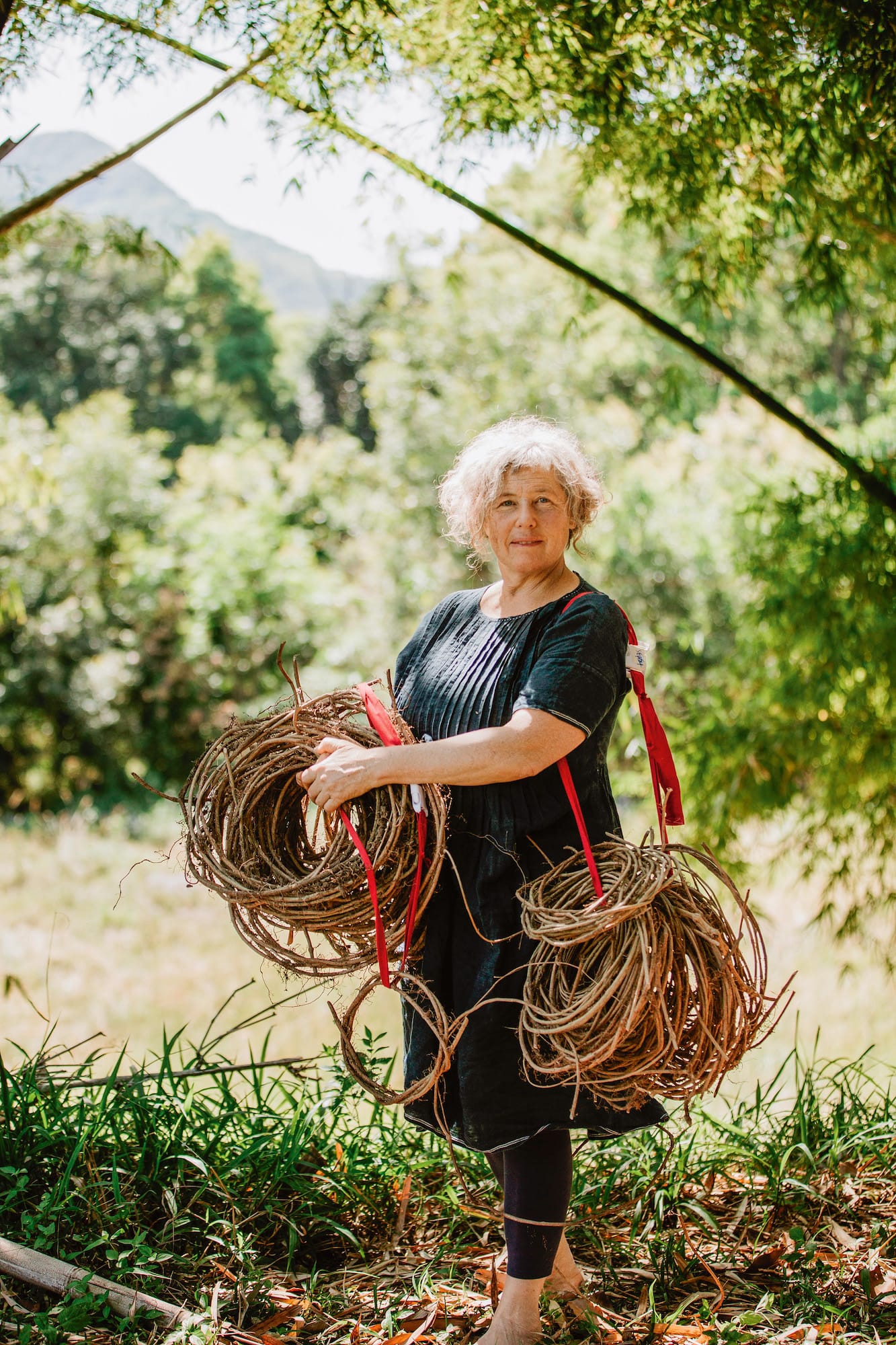
Life, death and weed control – Zimmi Forest’s artistry tackles the big themes.
Words Jen King
Photography Davina Bambrick
DEEP in the rainforest on a secluded property in northern New South Wales, Zimmi Forest is harvesting weeds by hand. She and her team are collecting the woody cat’s claw creeper (Dolichandra unguis-cati), introduced as an ornamental plant in the 1950s and now a declared “weed of national significance”.
There’s plenty of it. The rampant, showy vine, native to tropical Central and South America, has glossy leaves, large tubular yellow flowers and elongated, seed-laden fruits. Its claw-like tendrils enable it to climb up to 15 metres, smothering native vegetation, while its extensive network of tubers is almost impossible to remove, making it one of Australia’s most pernicious weeds.
Though it’s strenuous and difficult work, each bundle cut and removed is a win for the environment and provides the raw material to weave an unusual, eco-friendly basket.

Zimmi Forest weaves coffins. A basket maker and fibre artist for more than 30 years, Forest is passionate about sustainability and creating exquisite woven objects. Last year she added “coffin weaver” to her skillset and now fashions her harvests of cat’s claw creeper into unique coffins in her Mullumbimby studio. “People love my coffins, not just because they’re beautiful but because they’re saving native trees, the environment and transforming a pest into a resource,” she says, as she wrangles lengths of vine sprouting from the basket she’s working on. “And it’s a really good starting point to talk about death, dying and grief. Everyone has a story to tell.”
She holds regular workshops in all forms of basket weaving. She likes to remind participants that the craft has been part of human life since the beginning, from tying knots to secure structures, to making nets, to creating chairs, brooms and lacework. “We all have weavers in us and in our lineage,” she says. “Weaving is one of our first, continuous and oldest technologies.”
Forest has worked with almost every foraged plant fibre she has found, native and introduced, from Piccabeen palm to cordylines, hemp twine to jacaranda leaves.
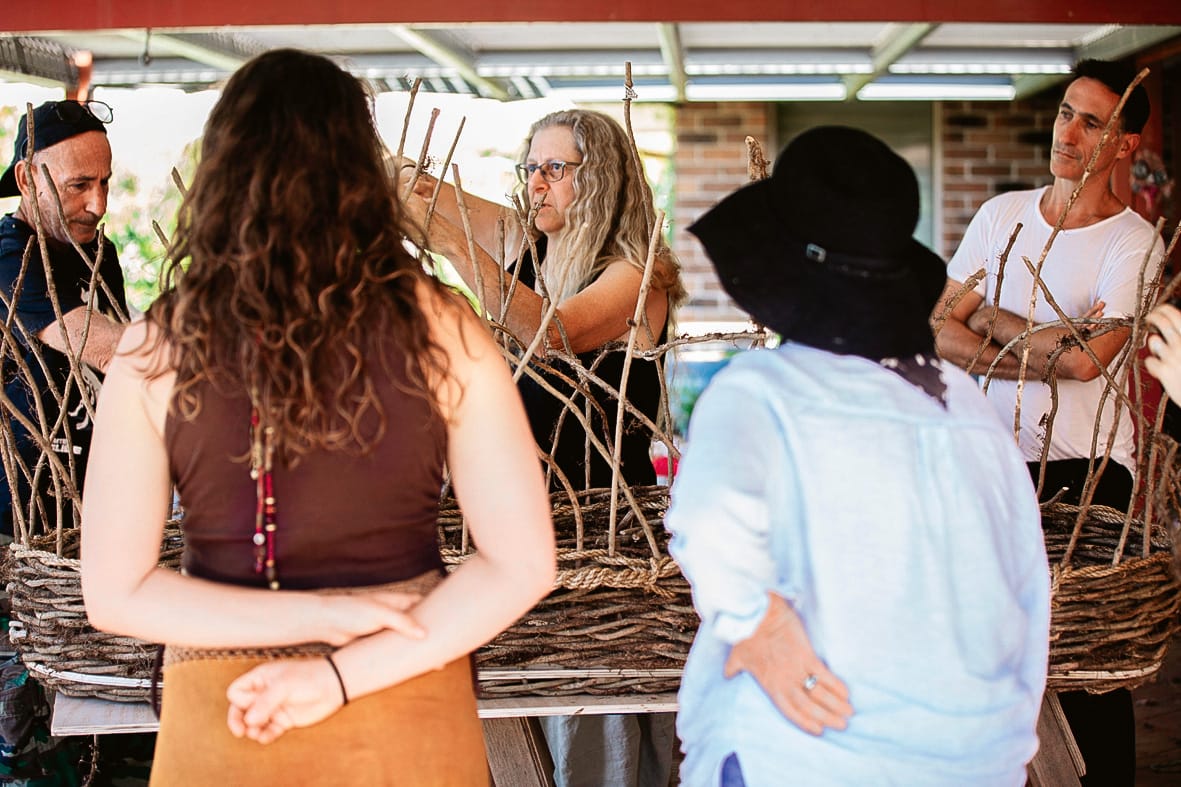
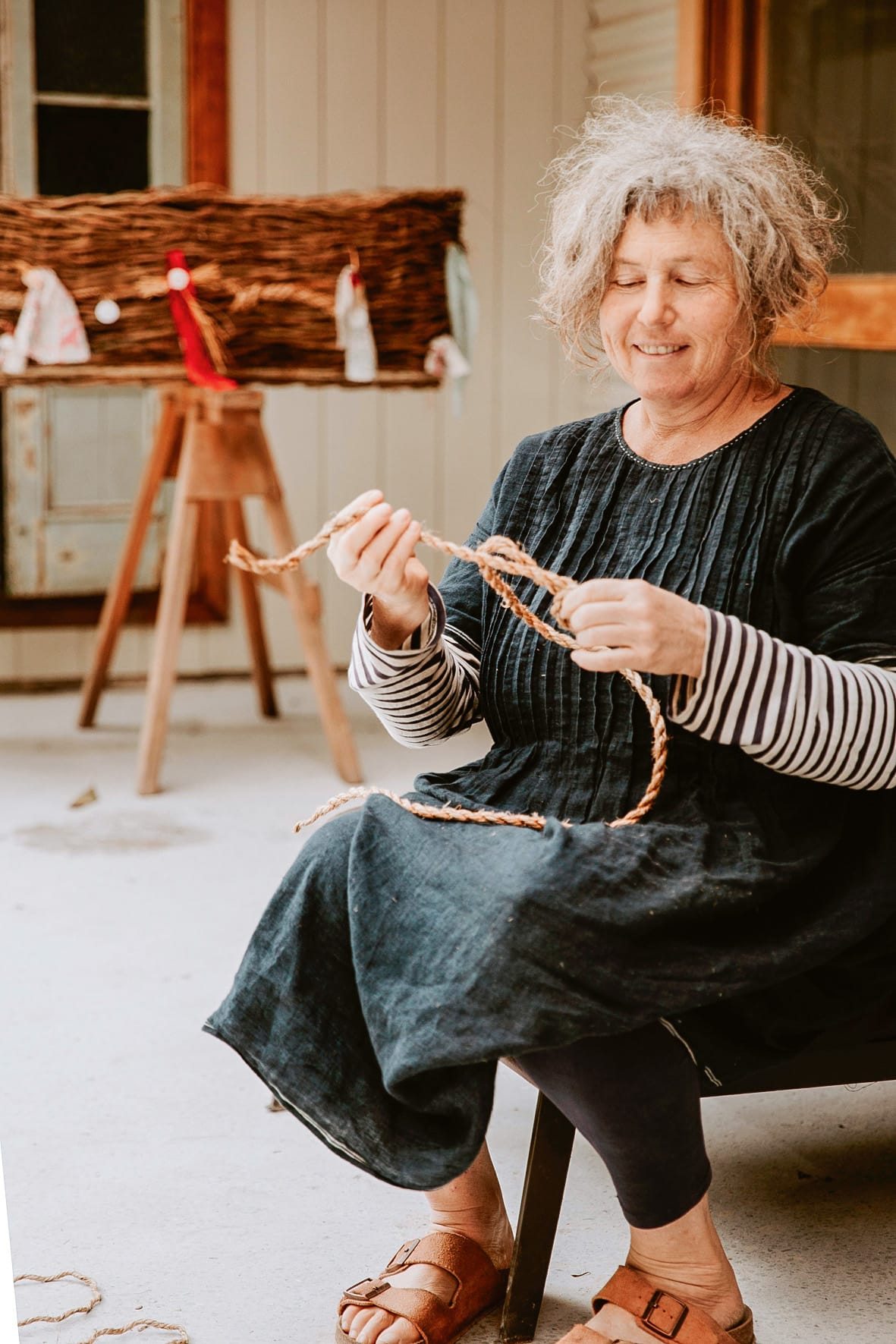
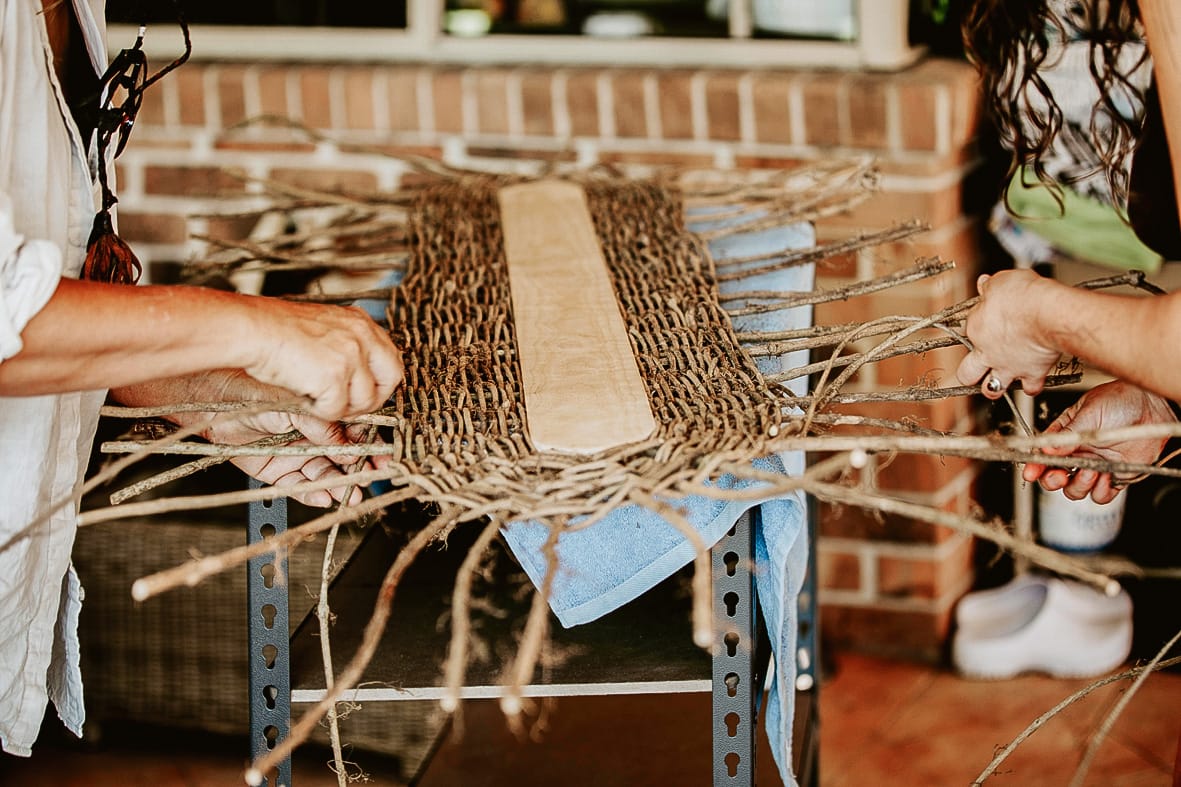
A few years ago she was invited by a Landcare group to teach basketry on a property in Drake, just east of Tenterfield. They were trying to eradicate cat’s claw creeper. It was an eye-opener for Forest, who hadn’t realised how extensive and devastating the weed was. The experience prompted her to consider how she could play a part in controlling and using the vine.
“Cat’s claw is a wonderful vine to weave,” she says. “And there’s a lot in this region so if I don’t want poisons in the environment, I’m going to have to find a use for it – and I have.”
She was aware of the long tradition and beauty of woven coffins in Indigenous and Western cultures, using fibres such as willow, wicker and bark. Inspired by a colleague in New Zealand who makes willow coffins and by the increasing demand for “green” funerals, Forest launched d’Vine Creations in 2024.
According to market research figures to 2030, the global green funeral market is expected to grow annually by 8.2 per cent as consumers seek more sustainable ways to be buried or cremated.
It isn’t the vine that Forest has found challenging; rather, the taboo topics of death and dying. “I know that people buy coffins ... and a coffin is a basket, just bigger,” Forest says. “But it’s a hard sell because people don’t want to talk about it, especially if they believe it will jinx them.”
In the belief it’s healthy to talk about the inevitable, Forest holds workshops with “death educator” Emma Beattie. In what could be considered a “living wake”, these two-day gatherings bring together family, friends and those preparing to die. They learn how to weave, together making a coffin and decorating it in ways that honour a loved one, while talking about death and grief in a supportive atmosphere.
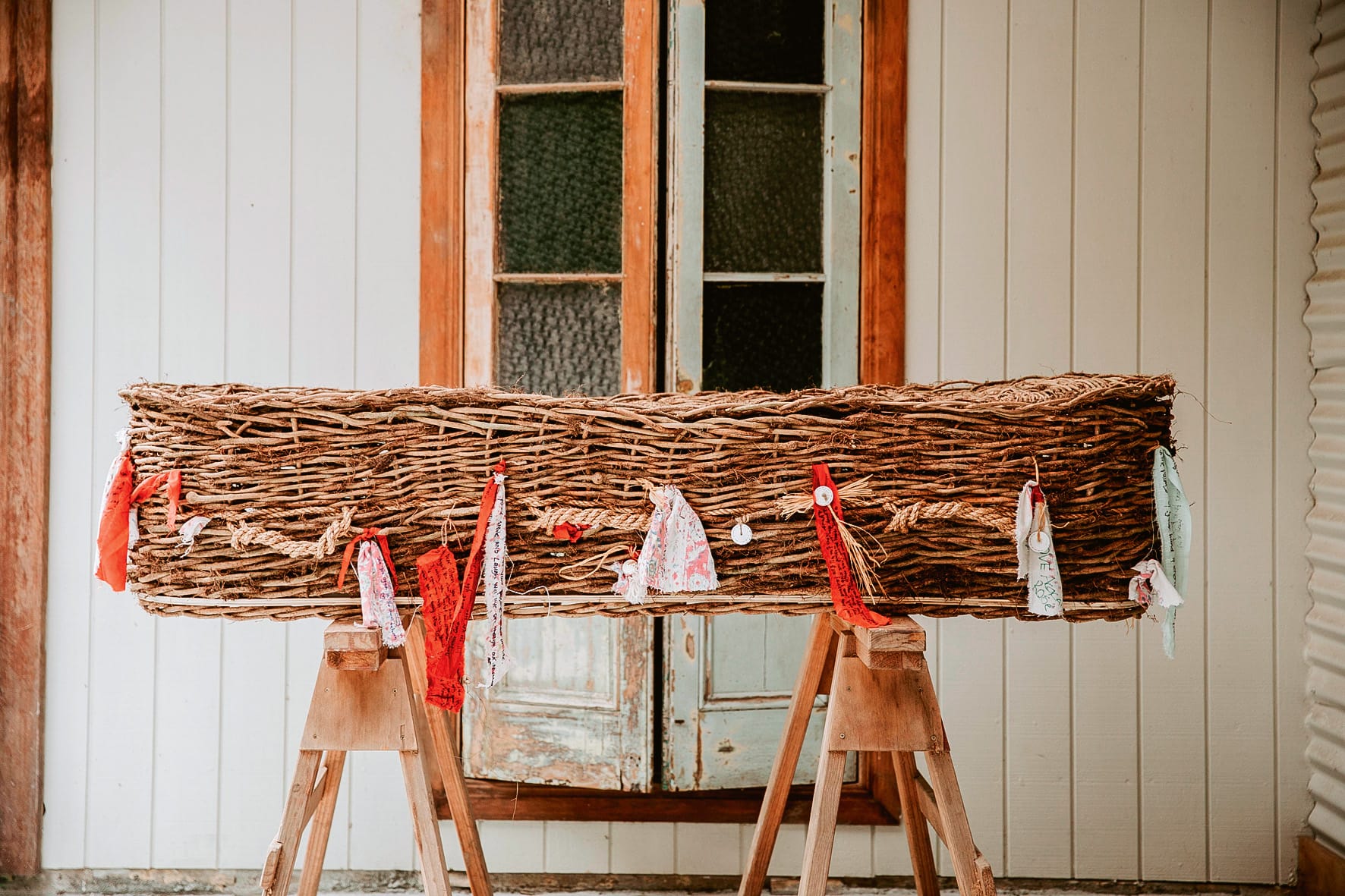
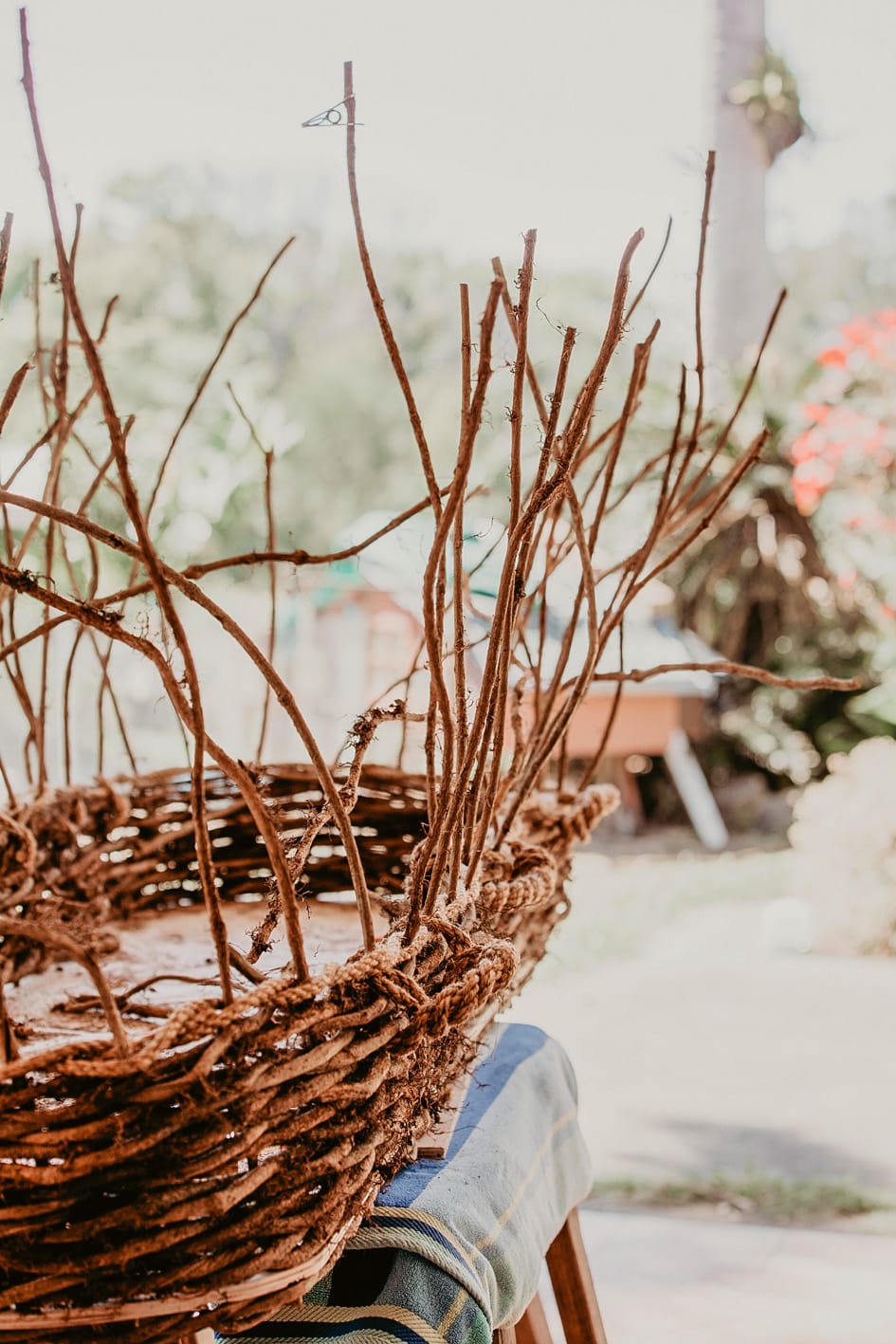
“People love my coffins, not just because they’re beautiful,” Forest says. Photography by Davina Bambrick.
Each of Forest’s “regenerative eco coffins” requires at least 60 hours to create, adhering to strict regulations around burial and cremation. Each is woven using cat’s claw vine that has been stripped of its fibrous filaments, and the coffins can be decorated by family and friends with any number of biodegradable objects, including leaves, seed pods, shells and feathers. The coffins are fitted with leak-proof corn-starch liners and rope handles, and the lids are finished with Forest’s signature woven fastener.
Coffins can cost up to $5500 each. “You know, you can have a beautiful-looking coffin from Asia for a fifth of the price and think you’re doing something green – but I believe it’s greenwashing,” Forest says. “Besides all the travel miles, imported fibre products have strict quarantine requirements that can include fumigation with methyl bromide. When that coffin is burnt or buried, there are poor outcomes for the environment.”
The coffin weaver encourages people to talk openly about death and dying and to explore alternatives to traditional coffins. Making a positive difference for the environment is not limited to life, Forest points out. It can be achieved in death, too.